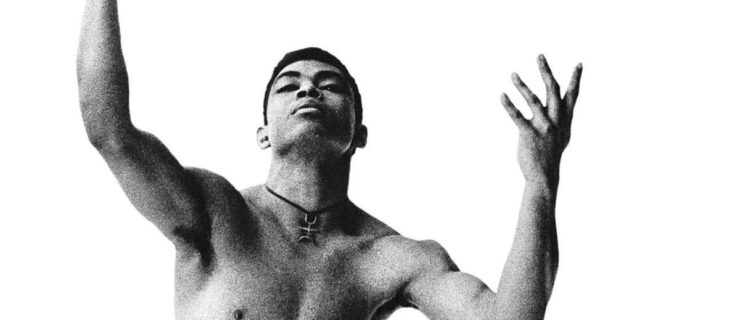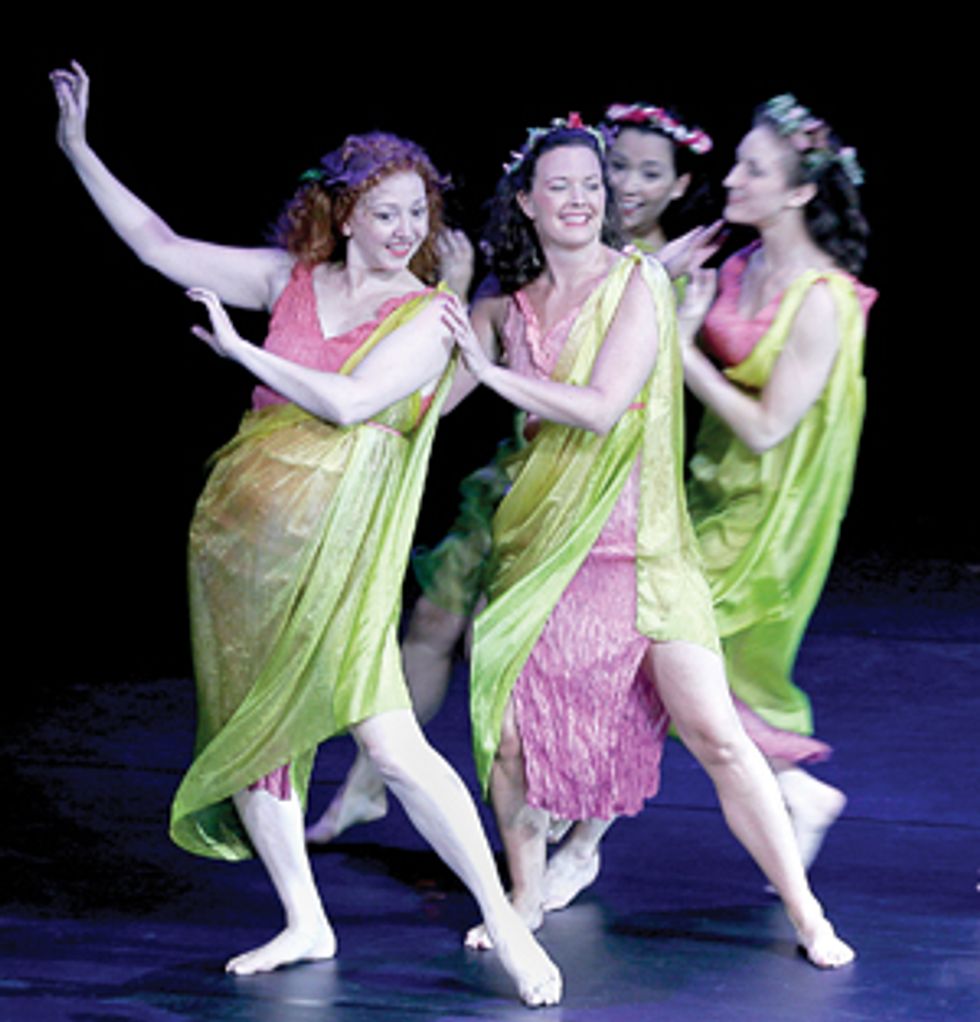A Beginner's Guide to Contact Improvisation
Picture this: You peek into a studio and see 10 different duets happening simultaneously. Some pairs move through a lift, while others roll swiftly across the floor. Everyone appears to be making it up as they go, yet the partnering is seamless. What the heck is happening? It’s contact improvisation!
What is it?
Sarah Konner, who teaches contact improvisation (CI) at NYC’s Movement Research, describes it as two dancers moving through space in response to gravity, momentum, and inertia. “CI is an improvised dance form first envisioned by Steve Paxton in 1972,” she says. “It was meant as a performance exploration, but has since transformed into a mostly nonperformance practice.” After Paxton introduced the form, it was influenced by other collaborators and innovators, including postmodern dancer Nancy Stark Smith. generally, a CI class starts as partners find a point of shared weight. Then, dancers maintain that shared point as they start to explore a wide range of movement possibilities, including lifting someone much heavier than you or getting to and off the floor with ease.
 Suzanne Lapps and Stephanie Nugent teaching (courtesy Nugent)
Suzanne Lapps and Stephanie Nugent teaching (courtesy Nugent)
K.J. Holmes, an instructor at New York University’s Experimental Theatre Wing, The Juilliard School, Sarah Lawrence College, and Movement Research, adds that CI isn’t only about partnering- it asks individuals to sharpen their own sense of physicality as well. “CI plays with trust, listening, and reflexive action,” she says. Improvisation is not about controlling what happens, and, Holmes says, it’s not just doing whatever you want. “CI practices widening our senses so we can tune into potential new movement.”
When Holmes teaches a CI workshop, dancers focus on specific mechanics and movement tools, as well as improvisational skills. The goal is for dancers to become more attuned to their center and to the subtleties of touch. “I explore musicality and movement phrasing, specific rolls and lifts, experimental anatomy, and various release technique,” she says.
 Nugent partnering (courtesy Nugent)
Nugent partnering (courtesy Nugent)
Your First Class
First things first: Wear comfortable pants and a long-sleeved shirt, and bring knee-pads. “We utilize all surfaces of the body to slide across the floor,” says Konner, so you’ll want to stay covered. And though you’ll spend a lot of time on the floor, you’ll quickly realize that it’s not just rolling around.
CI is about responding to impulse and sensation, not replicating what you see. “We practice allowing ourselves to fall, release weight, and roll with momentum, which might require undoing some of the well-practiced ways we hold ourselves up,” Konner says. Even as you learn specific mechanics, like how to roll, Konner says dancers should come to class with a sense of curiosity and imagination so you’re improvising from the beginning. “You can’t force it to happen,” she says. “CI is created among you, your partner, the ground, and gravity.” It’s totally OK to be a little clunky as your figure out what that means.
CI Class vs. CI Jam
In college, your first introduction to contact improvisation will most likely be a class If you keep pursuing it, you’ll probably hear more experienced dancers talk about a “contact jam.” What’s the difference?
K.J. Holmes, an instructor at NYU’s Experimental Theatre Wing, The Juilliard School, Sarah Lawrence College, and Movement Research in NYC, says the main difference is that class i led by a teacher. “The teacher guides students into practices that will aid them in finding new movement patterns, like specific rolls, falls, qualities of movement, and touch,” she says. Sara Konner, a CI instructor at Movement Research, says that class is a good time to break down mechanics and more challenging CI concepts. A jam may or may not feature a guided warm-up, and dancers may come or go throughout. “Generally, there’s no leader at a jam,” Holmes says, “but there’s a facilitator who’s available to assist in any way necessary.” A jam is also an invaluable opportunity to dance with more experienced CI practitioners. “That kinesthetic exchange is an important way to learn CI,” Konner says. “I recommend both class and jams.”
 Colleen Thomas and Anthony Phillips at Barnard College (courtesy Thomas)
Colleen Thomas and Anthony Phillips at Barnard College (courtesy Thomas)
Staying Safe
Ideally, any partner you find yourself dancing with will be able to “listen” to your body, but Sarah Konner says it’s always OK to dance away, walk away, or verbally tell your partner that you want to take a break. “You can get water, rest, and watch for a while” she says. “That’s part of the practice, too.” K.J. Holmes encourages dancers to remember that CI isn’t “happening to you,” but rather it’s a technique and process to use.
A version of this story appeared in the Summer 2019 issue of
Dance Spirit with the title “First Contact.”



